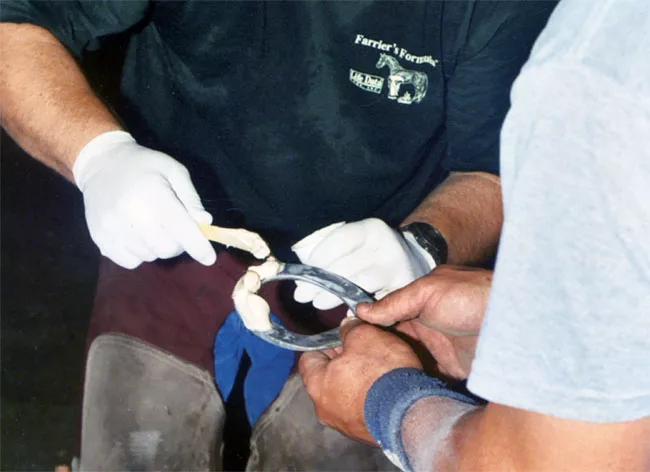American Farriers Journal
American Farriers Journal is the “hands-on” magazine for professional farriers, equine veterinarians and horse care product and service buyers.


BE SAFE, NOT SORRY. Protective gloves might be recommended for some glue applications, along with respiratory protection.
If you’ve had troubles with glue-on shoes, listen up. “These things all work,” says Bill Kirkpatrick, general manager of Sound Horse Technologies of Unionville, Pa. To create the strongest possible bond between hoof and shoe, choose the right glue for the job at hand and mix it properly, work with clean, dry feet, and use as much surface contact area as possible, he advises.
Farriers who become comfortable with glue-ons recognize them as a good option for cases in which there is little hoof to nail to, when ailments such as laminitis or white line disease make nailing impractical, or when there are limitations due to an extensive hoof wall repair, Kirkpatrick notes.
He says farriers should consider glue-on shoes an alternative that can be used when appropriate, rather than a replacement for all nail-on shoes. “For more than 1,100 years, nails and traditional farrier techniques have been very good, and they are not going away in the near term,” he adds.
Horseshoeing glues fall into two categories: polyurethanes and acrylics, Kirkpatrick says, with acrylics divided into two subcategories: cyanoacrylate and epoxy-methylmethacrylate. Farriers needn’t remember the chemical names, he says, but they should know that there are two families of glues, the urethanes and the acrylics.
Kirkpatrick says urethane offers “a wonderful chemistry” that works well in many cases, but it has limitations that must be considered.
For one, urethane…